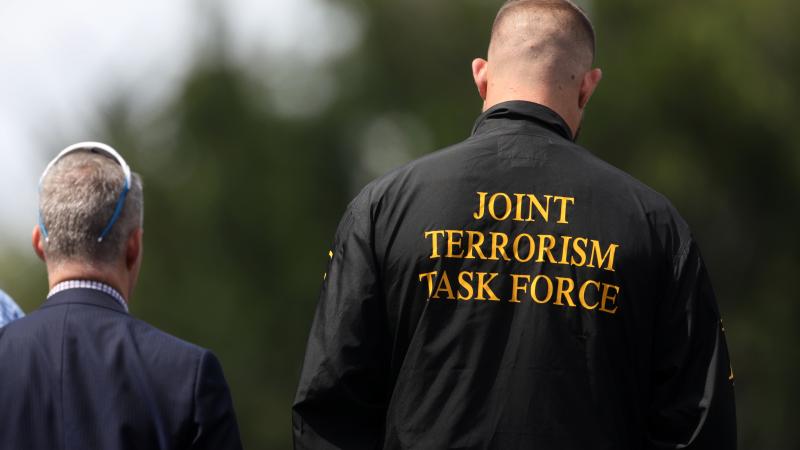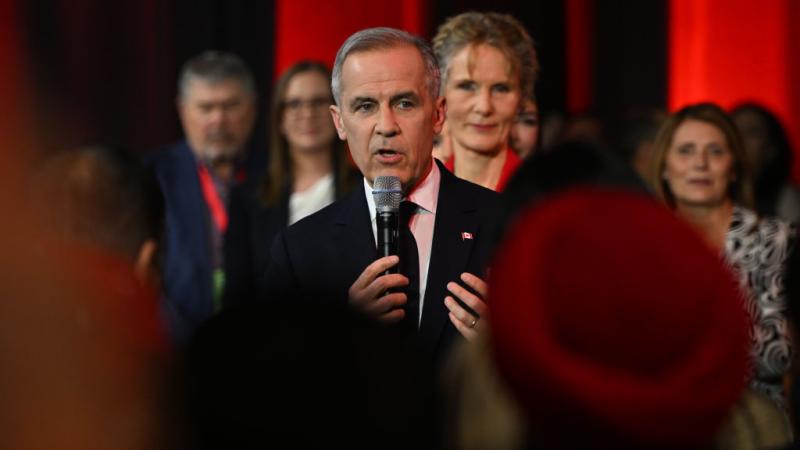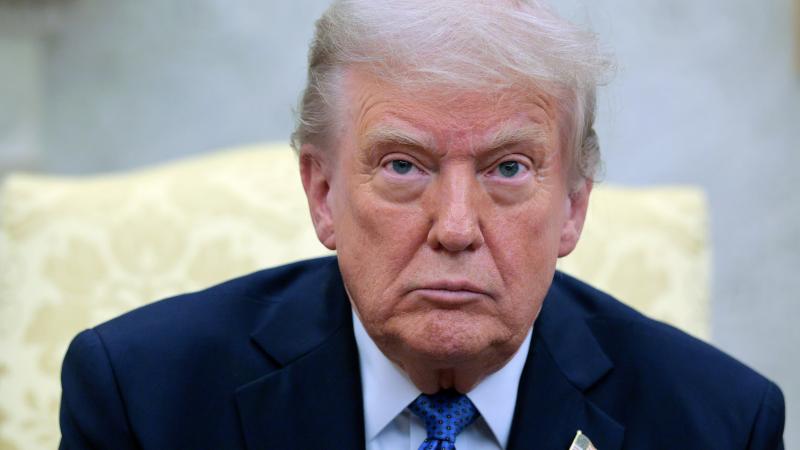Trump’s whirlwind first 100 days see admin notch wins amidst turbulence on various fronts
The 100-day milestone, though somewhat arbitrary, has been the typical benchmark for assessing a president’s initial rollout of their policy priorities. Trump's actions have been varied, but going unnoticed isn't one of them.
President Donald Trump’s second term has marked one of the busiest first 100 days of any president in recent memory, with the commander-in-chief issuing a slew of executive orders and pursuing a litany of initiatives designed to radically overhaul the federal government, upending the four-year legacy of his predecessor. The initiatives may also have a profound effect on how Americans define themselves.
Though Trump’s early period back in office has been moderately less battle-scarred than the Napoleonic Hundred Days, his return has nonetheless heightened anxieties in the nation’s governing and financial capitals, roiled markets, and placed tens of thousands of federal workers in employment limbo. The 100-day milestone, though somewhat arbitrary, has been the typical benchmark for assessing a president’s initial rollout of their policy priorities.
Prior to Trump, President Franklin Delano Roosevelt held a clear record for the most aggressive 100 days as he unveiled an impressive string of executive orders and initiatives aimed at combating the Great Depression, mostly referred to as "The New Deal."
Trump plans to tout his 100-day achievements at an event in Michigan on Tuesday. “The next 100 days will consist of trade deals, peace deals, and tax cuts. More American greatness is on the way,” White House press secretary Karoline Leavitt said, according to The Washington Post.
“In his first 100 days, President Trump has delivered on hundreds of promises and already accomplished his two most important campaign goals — the border is secure and inflation is ending,” Leavitt said.
Historian Sir Niall Ferguson said succinctly in The Free Press: "Donald Trump is crushing his to-do list."
Here’s a look at the highlights.
Executive orders
As of Monday, Trump had signed 137 executive orders since retaking the White House. By comparison, he signed a mere 30 during the same period of his first term. The scope and nature of those orders have varied widely, though many of them were day-one retractions of Biden-era policies or reinstatements of his own first-term orders.
On immigration, Trump declared a national emergency at the southern border, reinstated his “Remain in Mexico” policy, ordered the end of catch and release, overhauled vetting of entrants to the U.S., cracked down on drug trafficking, and moved to end birthright citizenship for the children of illegal aliens.
He was similarly aggressive in dismantling the federal bureaucracy, implementing a federal hiring freeze, creating the Department of Government Efficiency (DOGE), reducing federal worker protections to allow for substantial staff reductions, and moving to eliminate entire agencies.
Trump has also pursued the elimination of the Department of Education, moved to reform the higher education accreditation system, and frozen federal funding for institutions that he deems have failed to address discrimination on campus, particularly the rabid antisemitism at Harvard and Columbia Universities.
The Pentagon has perhaps witnessed one of the most dramatic transformations, with Trump directing Defense Secretary Pete Hegseth to root out “wokeness” in the form of diversity, equity, and inclusion (DEI) programs, critical race theory (CRT), and other divisive ideologies from the service. He also moved to ban transgender service members from the military, reinstated personnel who had to leave the armed forces over the COVID-19 vaccine mandate, and fired a host of senior officers, many of whom were DEI proponents.
Measurable topline statistics
The administration’s efforts thus far have yielded some quantitative results in an array of categories, especially on immigration-related matters. During Trump’s first 100 days, border encounters along the southwest land border fell by as much as 94% from the same time in the prior year.
As of late March, the administration has made at least 113,000 arrests and conducted at least 100,000 deportations. April data has yet to become public, but projecting the rate of deportations over four years could see the administration deport more than 2 million people in four years. Last week, Homeland Security Secretary Kristi Noem put the figure at more than 150,000 alien arrests, which would theoretically put the administration on pace for 2.2 million arrests in four years.
Trump has also secured foreign investment pledges from partner nations totaling roughly $3 trillion. That figure includes a $1.4 trillion pledge from the United Arab Emirates, a $600 billion pledge from Saudi Arabia, and a $1 trillion pledge from Japan. Several corporate entities have also announced 12-figure investment plans, including Apple ($500 billion), Nvidia ($500 billion), IBM ($150 billion), and Taiwan Semiconductor Manufacturing Company (TSMC) ($100 billion). The White House’s running tally of investment pledges currently totals more than $2 trillion from corporate entities alone.
One of Trump’s biggest efforts involved drastically reducing the size of the federal government and has seen the administration eliminate tens of thousands of positions. The administration confirmed that 75,000 employees had accepted a voluntary buyout after the first round, the second of which is ongoing. A recent report from Challenger, Gray, & Christmas, Inc. put the figure at 216,670 job cuts from DOGE-related efforts.
Unsurprisingly, Democrats have vowed to resist and obstruct Trump's policy changes, mostly through the use of lawfare. The Associated Press reports that 49 executive orders have been partially or fully blocked by the courts, 39 of the executive orders have been upheld by the judiciary, and 72 cases against his policies are still pending.
Much of that obstruction is laced with vitriol and unabashed hatred. “A rally a day keeps the fascists away,” Rep. Jamie Raskin, D- Md., told The New York Times. Rep. Jasmine Crockett, D-Texas, posted a message on social media saying "It’s been a long day… but in short, bullies ain’t shit! I don’t care what title you hold! This isn’t some long gone reality tv show or failed casino….this is war!
Diplomatic efforts
Trump made efforts to pursue a ceasefire in the Russia-Ukraine war and to advance nuclear negotiations with Iran. While neither have yet yielded tangible results, Trump has managed to secure negotiations directly with the Russians and, separately, with the Ukrainians to attempt to bring the warring nations to the table. As a side benefit to the talks, Trump envoy Steve Witkoff secured the release of American history teacher Marc Fogel, whom Russian authorities convicted of marijuana possession and had imprisoned for years.
The Iran talks, however, appear to look unexpectedly promising, despite initial opposition to such a prospect from Tehran. In mid-April, Witkoff met with Iranian Foreign Minister Abbas Araghchi in Rome, with Omani Foreign Minister Badr bin Hamad Al Busaidi moderating the discussion. The talks went well and the pair agreed to proceed to additional negotiations in Muscat, which took place over the weekend. The Americans, thus far, have expressed openness to permitting Iran to develop a civil nuclear program, but remain opposed to domestic uranium enrichment due to suspicions Tehran could quickly weaponize a civilian program.
Tariffs
Among the most tumultuous of Trump’s policies was his declaration of “Liberation Day,” announcing “reciprocal” tariffs in early April. That declaration impacted nearly every country on Earth. Trump made good on his campaign promise with those actions, though he prompted considerable recoil from key American trade partners and some of his own backers in the financial sector.
The tariffs ignited a week of wild volatility in the stock and bond markets. The Standard & Poors 500 Index, a stock market index tracking the stock performance of 500 leading companies listed on stock exchanges in the United States, fell more than 10% in just three days.
Trump appeared to reverse course by announcing a 90-day pause on some of the steepest tariffs, except for those on China. In the interim period, Trump left in place a 10% baseline tariff while he pursued trade agreements with other nations. He is expected to announce several of these arrangements in the coming days.
Treasury Secretary Scott Bessent has suggested that the tariffs set the stage for favorable agreements in a recent speech, saying "[t]here is an opportunity for a big deal here, that the US is looking to rebalance to more manufacturing, the identity of that would be less consumption.” White House advisor Peter Navarro, moreover, has teased the prospect of “90 deals in 90 days.”
The Facts Inside Our Reporter's Notebook
Links
- Napoleonic Hundred Days
- the most aggressive 100 days
- Karoline Leavitt said
- The Free Press
- signed 137 executive orders
- fall by as much as 94%
- at least 113,000 arrests
- Kristi Noem
- $2 trillion
- 75,000 employees
- The Associated Press
- second of which
- 216,670
- Marc Fogel
- met with Iranian Foreign Minister Abbas Araghchi
- additional negotiations
- Standard & Poors 500 Index
- 90-day pause
- has suggested
- Peter Navarro
















